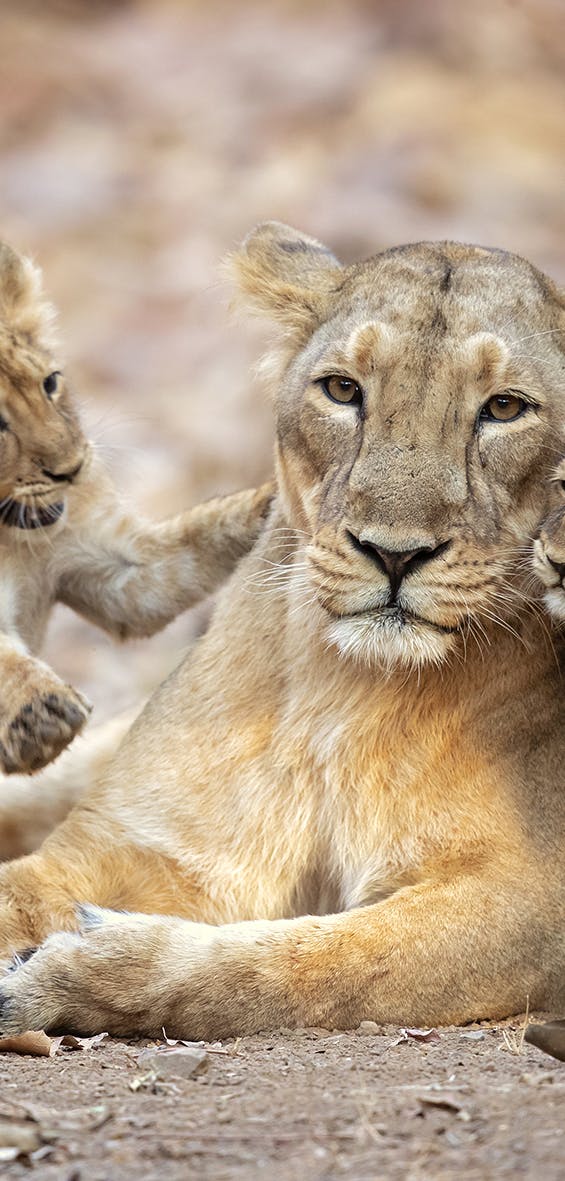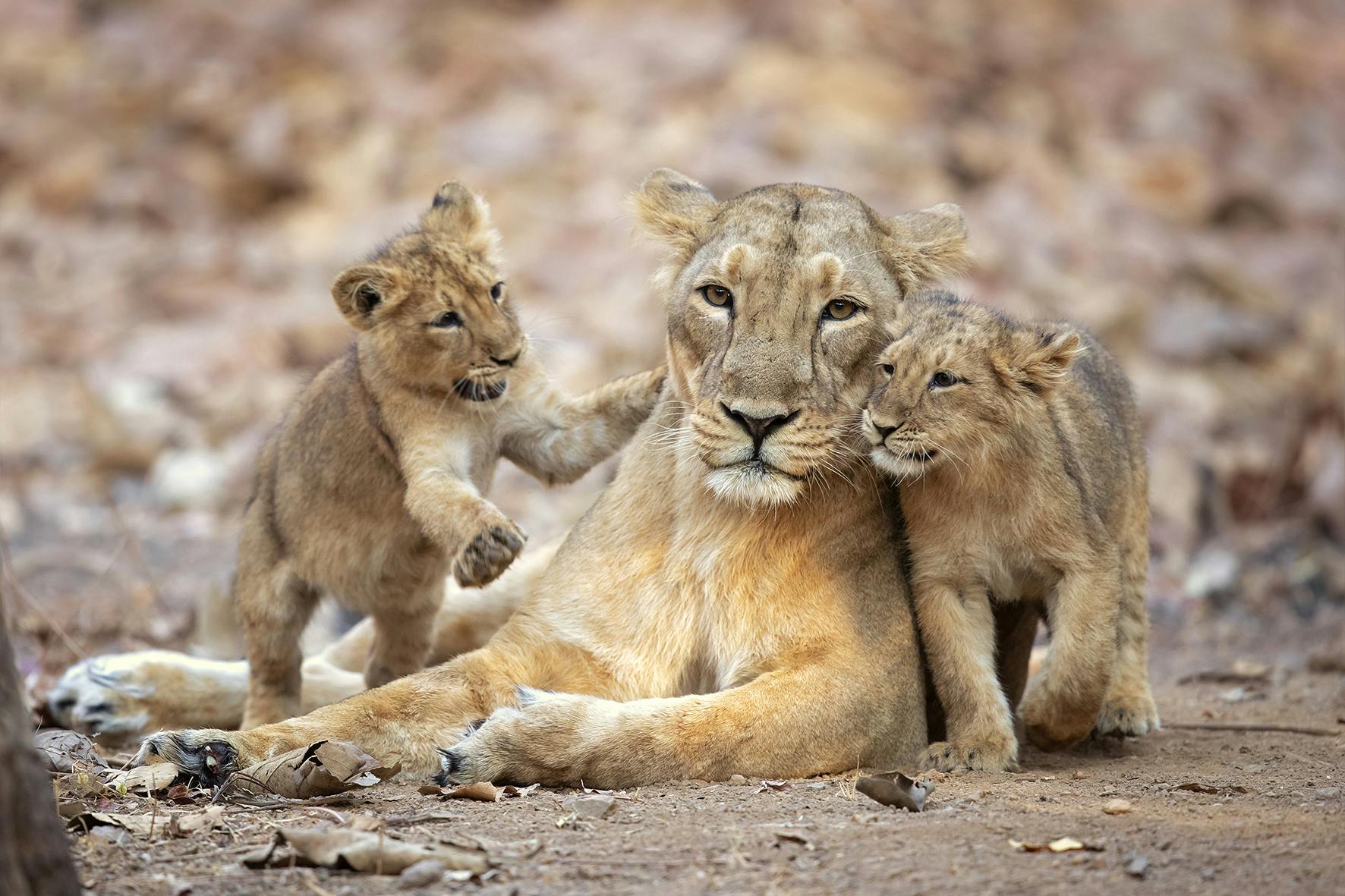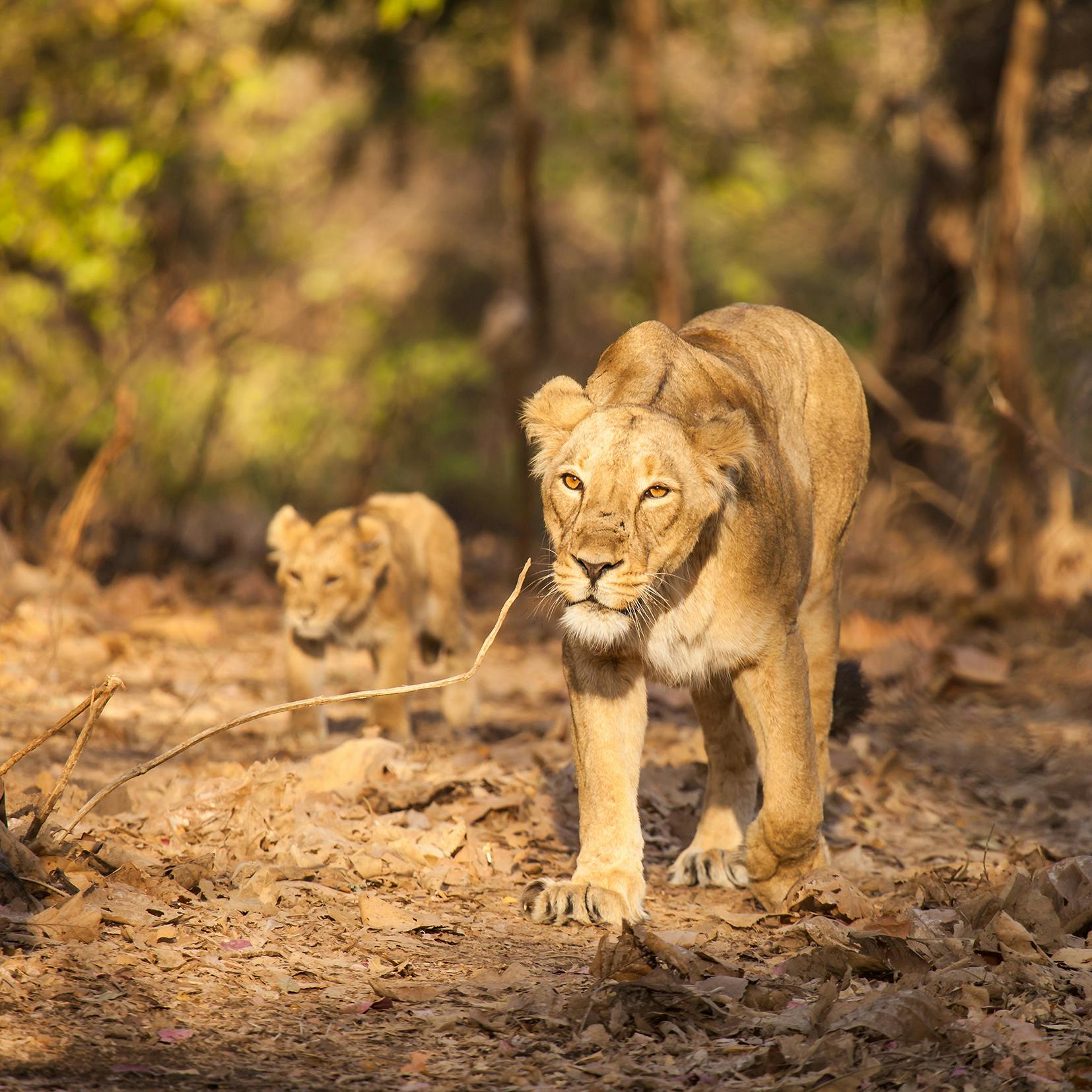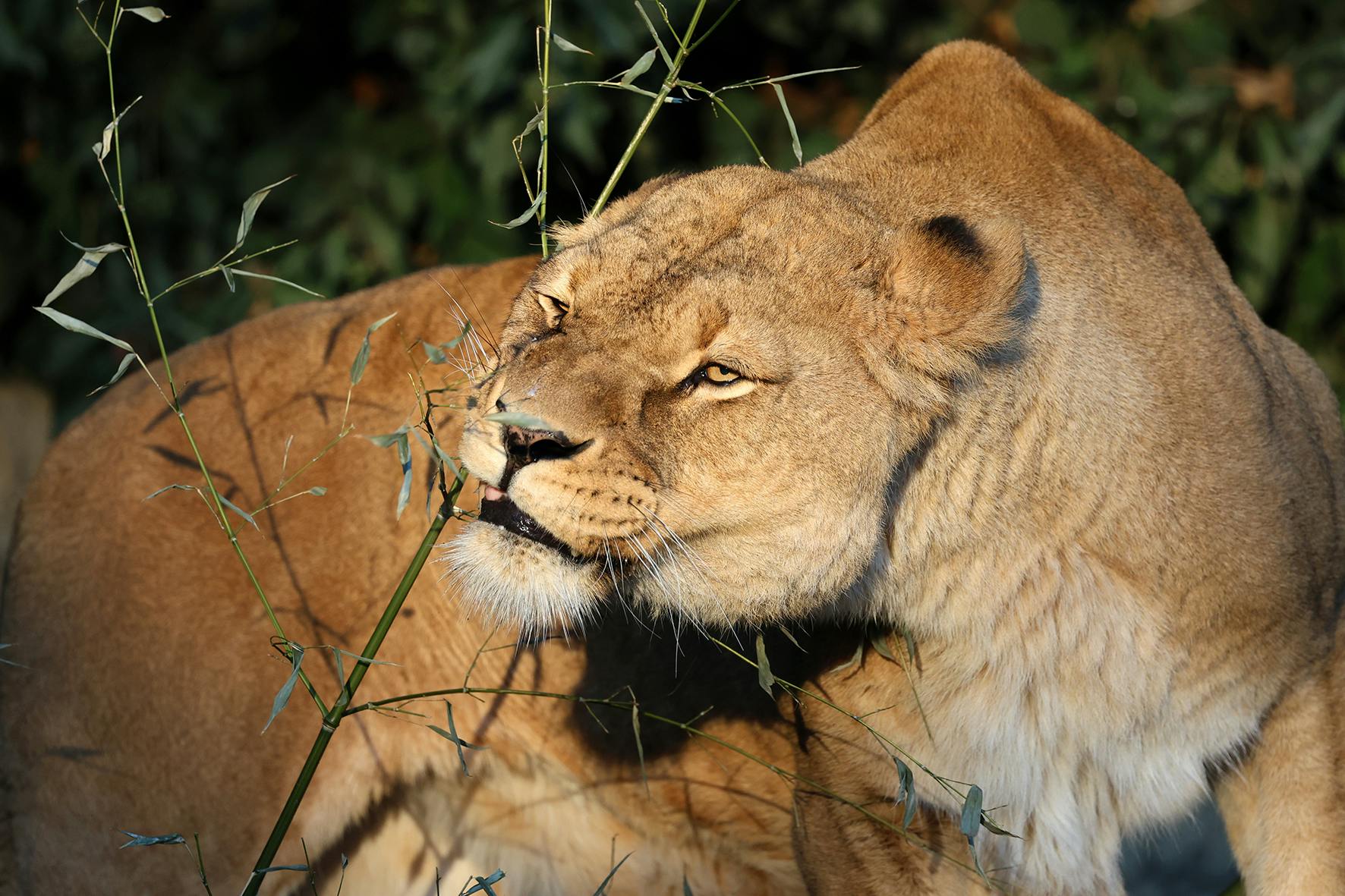Wishu
The young male lion came over from Belgium in 2023.


Lions are large felines, recognizable by their muscular build, golden-brown coat, and long tail with a dark tuft at the end. Males also have a thick mane around their neck. The difference between Asian and African lions is also visible in the mane: it is slightly less imposing than that of their African relatives. Additionally, Asian lions are generally a bit smaller and have a skin fold running along the length of their lower abdomen.

16 - 18 years
Height: about 90 -125 cm
Length: 1,4 - 2,5 meters
♀ Between 120 and 190 kg
♂Between 150 and 225 kg

Asian lions typically hunt alone. In the forested environment where they live, they can hide well. When an unsuspecting boar, deer, or antelope comes too close, the lion leaps out to seize its prey. By preying on these animals, the lion ensures that there aren't too many herbivores in the area. This way, the forest is not overgrazed. Therefore, large predators like lions are very important for their habitat.

Around 1900, the number of wild Asian lions reached a low point, with fewer than 20 animals remaining at that time. Since then, hunting of lions has been banned, and the lions' habitat has been increasingly protected. As a result, the number of lions in India is on the rise again. By 2017, there were already 650! Although the situation for the Asian lion is improving, most of the animals are descended from the same parents. This situation means there's a significant risk of inbreeding among Asian lions.
In the past, the Asian lion was found from Persia to East India. Today, they can only be found in Gir Forest National Park in western India. Unlike their African relatives, who hunt on open plains, Asian lions live in forested environments.
...The mane of the Asian lion often turns blacker as they get older?

Because Asian lions in zoos all descend from the same small group, they often suffer from a neurological condition called ataxia. This disorder causes them to lose their balance and have increasing difficulty moving. Therefore, in collaboration with Utrecht University, Diergaarde Blijdorp is conducting research into ataxia. In doing so, they hope to detect this debilitating neurological deviation at an early stage. This early detection would enable better selection of animals for breeding, ensuring the birth of healthy offspring.
The Asian lion enclosure in Blijdorp has a high fence, as lions can jump more than three meters high. The lions can choose whether they want to go inside or outside. They are fed twice a week. While this may seem infrequent, it's important to note that in the wild, they do not eat every day either. To further enrich the lions, they are given a carcass once a month to stimulate their natural behavior.